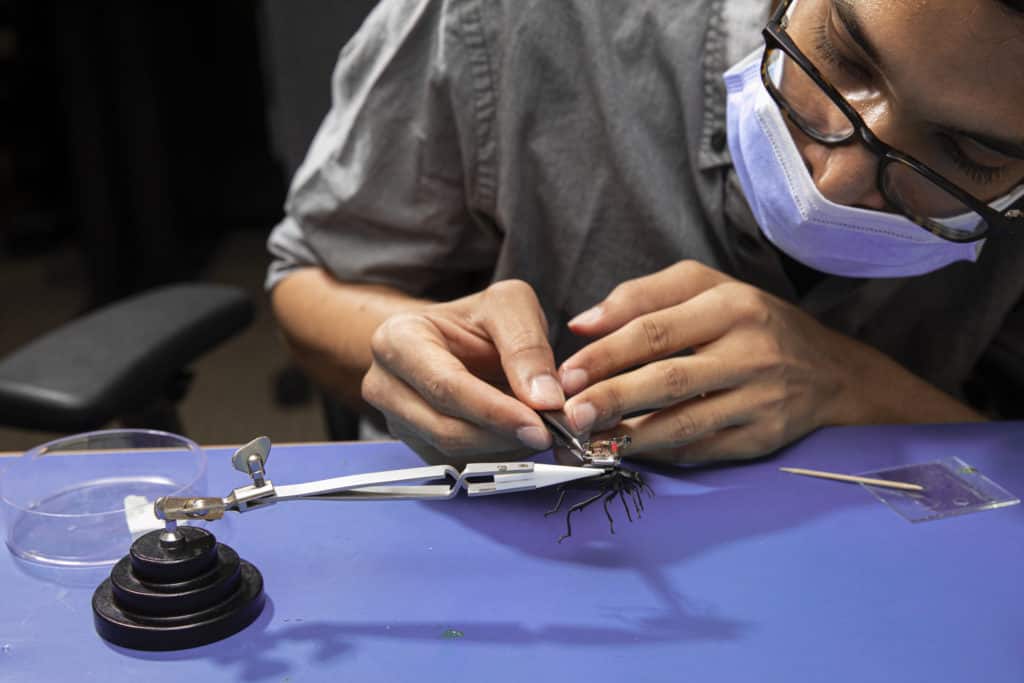Share this article
Tiny camera shows the world through tiny wildlife’s eyes
As video cameras have gotten smaller, their usefulness in monitoring wildlife has continued to grow. Still, some species have been too tiny to support them. But a new camera designed by scientists at the University of Washington is tiny enough to fit on the back of a beetle.
That’s allowing researchers to get data from some very tiny animals. Alejandro Rico-Guevara, an assistant professor in the Department of Biology at the University of Washington, is using the small, high-speed cameras, and the accelerometers that are part of the system, to study how quickly hummingbirds extract nectar from wildflowers and how that may impact foraging behavior.
“Most of the tech of this kind available to study vertebrates has been designed for animals that range from large to small, but hummingbirds are tiny — much more like large insects than vertebrates in size,” he said.
To create a camera small enough to fit on an insect, Vikram Iyer, a PhD student at the University of Washington, drew his inspiration from the way insects see.
“If you think about the camera that’s in your smart phone, the camera element itself is not very big, but the rest of the system adds a lot of weight, like the processor and battery,” said Iyer, who led a study on the technology published in Science Robotics.

The cameras can help researchers track behaviors of small species.
Credit: Mark Stone/University of Washington
With some of the world’s smallest vision systems, many insects have specialized regions in their eyes, Iyer said. Some have better resolution. Others can see fast motions. Having lots of these sensitive photoreceptors looking in all directions would take a lot of energy, so instead they evolved to move their heads to focus on different things.
To mimic this behavior, Iyer’s team attached the camera to a mechanism that moves it back and forth. This allows the camera to be smaller and lighter but still have a wide field of view. To extend battery life, they added an accelerometer to only capture video when it’s moving. The video streams in real time to a smartphone using Bluetooth technology, so researchers can follow the activity from up to 100 meters away.
“Aside from the camera itself, specifically what we really have here is this small wireless computing platform,” Iyer said.
That allows biologists to use other sensors, to gather other data. Rico-Guevara is using the accelerometers to study hummingbird activity. Iyer hopes to see the technology deployed to control the recently discovered invasive Asian giant hornets (Vespa mandarinia) in Washington state. Fitted with tiny radio tracking tags, he said, the hornets could lead managers to their nests.
Header Image: Researchers shrunk cameras down to fit on beetles’ backs. Credit: Mark Stone/University of Washington








